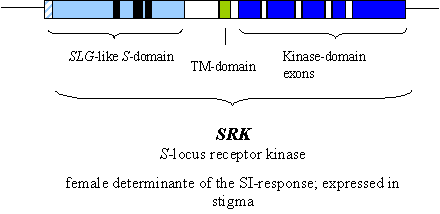Mating
systems in Brassicaceae: Self-incompatibility system in the genus Capsella
at the molecular and phenotypic level
Melanie Paetsch, Barbara Neuffer
In
flowering plants, especially in short living plants, the reproductive phase is
of particular importance. Beside seed dispersal the pollen transfer represents
one opportunity for genes to move among individuals and populations. Therefore,
mating strategies have diverse genetic consequences: outcrossing species may
acquire intrapopulation variability more easily, whereas selfing species may
increase colonisation ability and spreading out from their place of origin
quickly and successfully often accompanied by bottle neck effects.
Approximately
30 % of angiosperms are estimated to be predominantly selfing and it becomes
obvious, that in some cases the advantages gained by self-fertilization
outweigh the disadvantages as inbreeding depression and lack of gene
recombination. Due to assurance of seed set, gene combinations which proved
successful will stay together and certain genes will become fixed. The fixing
of variants may have local adaptive advantage.
Many
genera in the Brassicaceae include both outcrossing and selfing species.
Therefore, one has to assume that the transition from self-incompatibility
(SI) to self-compatibility (SC) occured frequently and independently, whereas
SI is thought to be the ancestral condition.
The
genus Capsella comprises three
species, two diploids and one tetraploid. The diploid C.
grandiflora (Fauché & Chamb.)
Boiss. represents the ancestral obligate outbreeding species from which C.
rubella Reuter (2x) and C. bursa-pastoris (L.) Medik.
(4x) originated. The
self-incompatible C. grandiflora is
restricted to the western balkan, whereas the self-compatible C.
rubella has colonised the Mediterranean climatic regions worldwide. In C. rubella the SI system broke down resulting in a predominantly
selfing species with no change in the ploidy level. The breakdown of the SI
system in Capsella coincides with
reduction of flower size, colonising ability and a wider distribution range,
dislaying ecotypic differentiation. We hypothesize
that the
breakdown of the SI system seems to be one of the key events in the evolution
of the genus Capsella.
|
Inflorescences
of Capsella species: The breakdown of the SI-system in Capsella rubella coincides with morphological changes, for example, reduction of flower size and loss of fragrance |
|||
|
|
||
